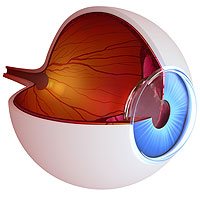Children are becoming more and more exposed to harmful factors that could affect their eyesight. As a result, vision problems are affecting children at younger ages, and their life experiences are being changed and restricted because of it. Early detection is by far the best way to avoid serious problems with eyesight. Getting to know common vision problems in children is also important, so here’s a list of three common pediatric eye conditions.
Strabismus
With strabismus, the eyes are misaligned. The eyes may turn in, out, up, or down, but they do not fixate on the same point. This adversely affects vision and depth perception, in some cases giving children double vision. Strabismus can be caused by problems with the eye muscles, the nerves that transmit information to the muscles, or the control center in the brain responsible for eye movements.
Strabismus can be treated in a number of ways. Most start with an eyeglass or contact lens prescription along with vision therapy. During vision therapy, the eyes and brain are trained to work together. If neither of these treatments work, and strabismus is significantly delaying development, eye muscle surgery may be recommended.
Contact the doctors at Eye Care Specialists in the Wilkes-Barre or Scranton area to find out how to best improve your child’s vision.
Amblyopia
Amblyopia is often referred to as “lazy eye”. A child with amblyopia does not develop the proper nerve pathway in one eye, sending less neuro-electrical signals to the brain than normal. The unaffected eye still sends strong signals. When left untreated, it can cause damage to the child’s vision.
Children with amblyopia should be examined by an eye doctor within the first year of birth, and have regular checkups. If detected and treated early, amblyopia is fairly simple to deal with. Treatments can include vision therapy, glasses, and patching of the good eye to strengthen the amblyopic eye. It is crucial to have a pediatric eye care specialist that you can trust, especially for children under 6 years of age.
Refractive Errors
Refractive errors among children are also increasing in numbers. Refractive errors occur when shape of the eye does not allow light to bend or refract properly, causing images to blur.
Depending on where the light focuses, a child with refractive issues have myopia (nearsightedness), hyperopia (farsightedness), or astigmatism. Myopic eyes will focus light in front of the retina, whereas hyperopic eyes focus behind.
Astigmatism refers to the imperfect curvature of the cornea, which does not allow light to evenly focus on the retina.
These refractive errors cannot be prevented, but they can be managed. Depending on age, an eyeglass prescription may be necessary. Clear vision is essential to proper development, especially as children begin to read and write. Children should have eye examinations every few years to ensure healthy vision.
One of the most important learning tools a child can have is sight. For eye examinations and medical advice from our expert pediatric eye doctors, call Eye Care Specialists today.

















